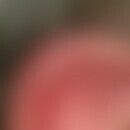Synonym(s)
DefinitionThis section has been translated automatically.
Punica granati fructus, the fruit of the pomegranate, is a drug used in herbal medicines for treatment in addition to its main use as a food.
Commission E: not processed
ESCOP: not processed
HMPC: not processed
Empirical medicine: see under application/use
IngredientsThis section has been translated automatically.
Punicae granati fructus contains polyphenols, including delphinidin, cyanidin, pelardonidin and crosmin. Other ingredients are tannins, e.g. ellagic tannins, ellagic acid derivatives, organic acids such as citric acid, vitamin C, beta-carotene, selenium, zinc, copper and carbohydrates. Alkaloids, triterpenes, sterols. Phytohormones: beta-sitosterol, betulin, oestradiol, oestrone, quercetin, anthocyanins; gallic acid, vitamins, minerals: potassium, calcium, iron.
Fruit juice: boric acid, oxalic acid, malic acid, ascorbic acid, free amino acids, up to 11 % glucose, up to 20 % invert sugar.
Seeds: mono-, di- and triacylglycerols, free fatty acids, sterols and sterol esters, phospholipids and cerebrosides.
You might also be interested in
EffectsThis section has been translated automatically.
Punicae granati fructus has antioxidant, hepatoprotective, gastroprotective and antiphlogistic effects. In addition, pomegranate has antiarteriosclerotic, antidepressant and cytostatic effects. Delphinidine shows experimental Uv-protective effects.
Field of application/useThis section has been translated automatically.
Punicae granati fructus is used for liver protection, cardiovascular support (reduction of ACE), menopausal complaints, prophylaxis of arteriosclerosis. It is also used for chronic diarrhea, inflammation of the gums, dysentery and intestinal parasites.
The bark (granati cortex) used to be used as a tapeworm remedy, but is now obsolete due to severe side effects.
Pomegranate fruit, juice, fermented pomegranate juice or tablets are used internally; externally as pomegranate oil, also in cream and ointment form.
An anti-cancer effect has been observed in studies, including breast cancer, prostate cancer and leukemia.
DosageThis section has been translated automatically.
For internal use at least 3 x daily 20 ml. It is recommended to consume the juice at least 30 minutes before taking protein-containing food. Punicae granati fructus should not be mixed with food proteins when ingested, as the tanning agents are irreversibly bound to proteins and are therefore no longer bioavailable.
Undesirable effectsThis section has been translated automatically.
Pomegranate root bark and rind are poisonous and cause vomiting and diarrhea.
ContraindicationThis section has been translated automatically.
There are no known contraindications.
InteractionsThis section has been translated automatically.
There are no known interactions with other ingredients.
LiteratureThis section has been translated automatically.
- Schilcher H (2016) Leitfaden Phytotherapie, Urban & Fischer Verlag, Munich, p. 145 ff.
- Sobiepanek A et al. (2016) The effect of delphinidin on the mechanical properties of keratinocytes exposed to UVB radiation. J Photochem Photobiol B 164:264-270.




